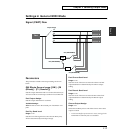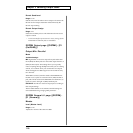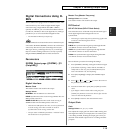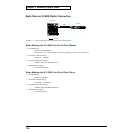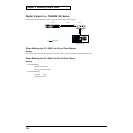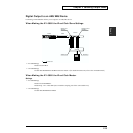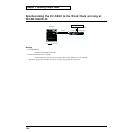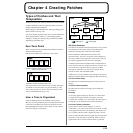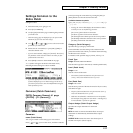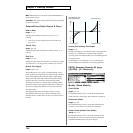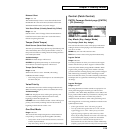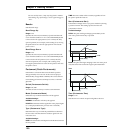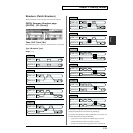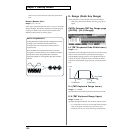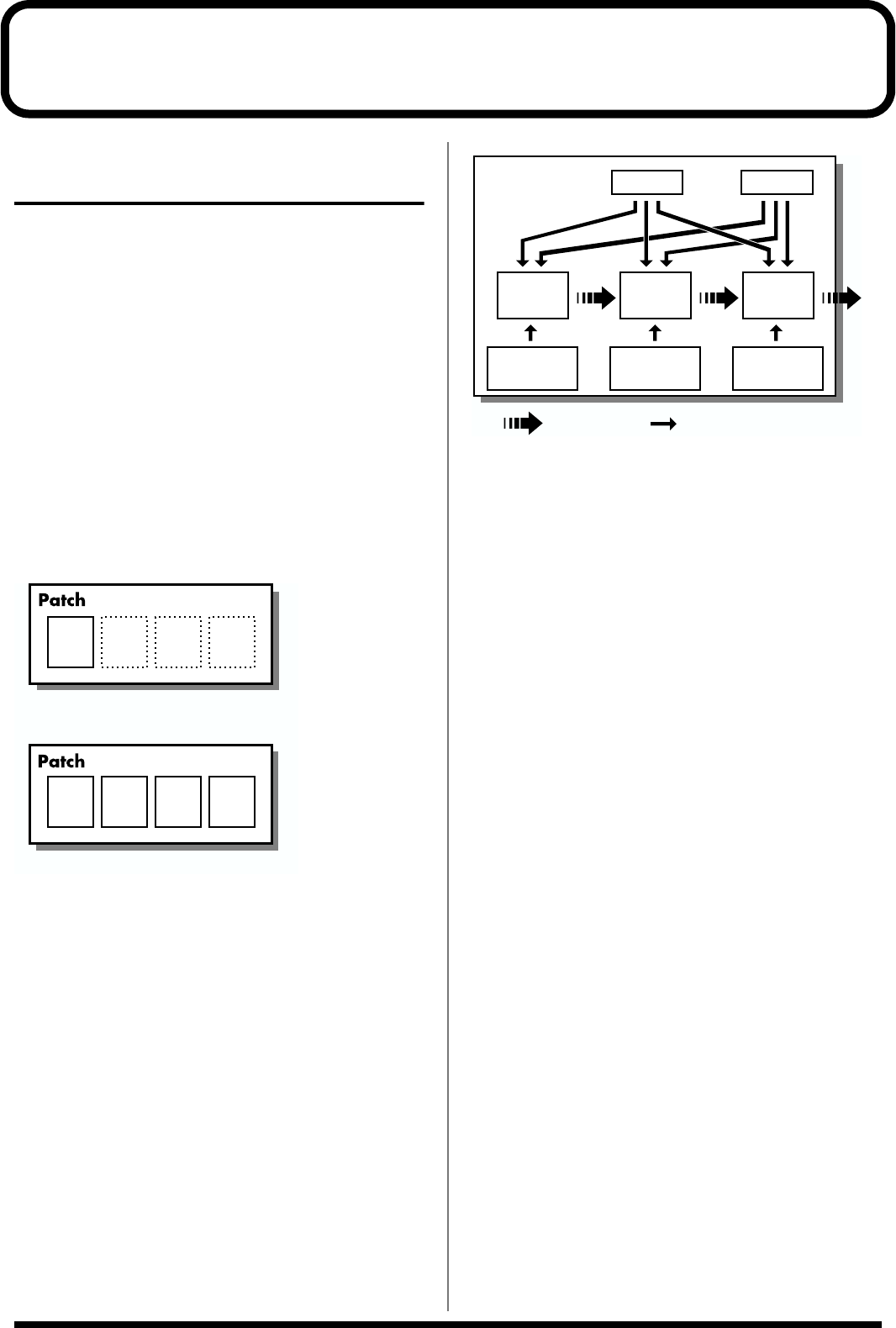
125
Chapter 4 Creating Patches
Types of Patches and Their
Composition
The basic unit of sound used in performances on the XV-5080
is called a Patch; there are two types of Patches, Four-Tone
Patches and Multi-Partial Patches.
The Patch type is determined by the Tone type setting, in the
Patch Common screen (p. 127).
You do not need to be particularly aware of such distinctions
when playing Patches. However, when changing Patch
settings or creating new Patches, the parameters used differ
depending on the Patch type.
Four-Tone Patch
These correspond to the XV-5080’s Preset Patches and Wave
Expansion Board Patches.
Each Four-Tone Patch can contain up to four Tones.
fig.04-001.e
You can turn the Tones in a Patch on or off. Only Tones that
are turned on are heard when you play the Patch. (p. 126)
You can also specify how Tones 1 and 2 and Tones 3 and 4
will be combined (Structure). (p. 131)
How a Tone Is Organized
In the XV-5080, the Tone is the smallest class of sound.
However, it is not possible to play a Tone by itself. The Patch
is the unit of sound that can be played, and Tones are the
basic building blocks used to form a Patch. A Tone consists
of the following five components.
fig.04-002.e
WG (Wave Generator)
Provides for the selection of PCM waveforms (waves), which
form the basis of the sound, and provides settings that
determine how the pitch of the sound will change.
The XV-5080 offers 1083 different waveforms. (See
Waveform List p. 277.) Two waveforms can be assigned to
each Tone. (These can be assigned as a stereo pair, with one
waveform assigned to the left, and one to the right.)
All Patches onboard the XV-5080 consist of combinations of
Tones, which in turn are composed of these waveforms. You
can use the force with which keys are played, or MIDI
messages to control the way each Tone is played. This is
referred to as the Tone Mix Table (TMT).
Additionally, you can load Wave data (samples) into the XV-
5080 from sampler libraries and assign this data to the Tones.
TVF (Time Variant Filter)
Specifies how the constituent frequencies of the Tone will
change.
TVA (Time Variant Amplifier)
Specifies how the volume will change, and controls the
localization.
Envelope
An envelope applies changes to the Tone over time. There
are separate envelopes for Pitch, TVF (filter), and TVA
(volume). For example, you would use the TVA Envelope to
modify the way in which the Tone attacks and decays.
LFO (Low Frequency Oscillator)
Use the LFO to create cyclical changes—or cyclical
“modulation”—in a Tone. Each Tone has two LFOs. An LFO
can be applied to the Tone’s pitch settings, TVF (filter), and
TVA (volume). When an LFO is applied to pitch, a vibrato
effect is produced. When an LFO is applied to the TVF cutoff
frequency, a wah-wah effect is produced. When an LFO is
applied to the TVA volume, a tremolo effect is produced.
Example 1:A Patch consisting of only one Tone
(Tones 2–4 are turned off).
Example 2: A Patch consisting of four Tones.
Tone
1
Tone
2
Tone
1
Tone
4
Tone
3
Tone
4
Tone
2
Tone
3
WG
Pitch
Envelope
TVF
TVF
Envelope
TVA
Envelope
TVA
LFO 1
LFO 2
Tone
audio signal
control signal



